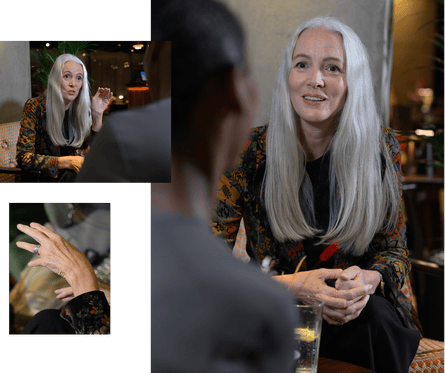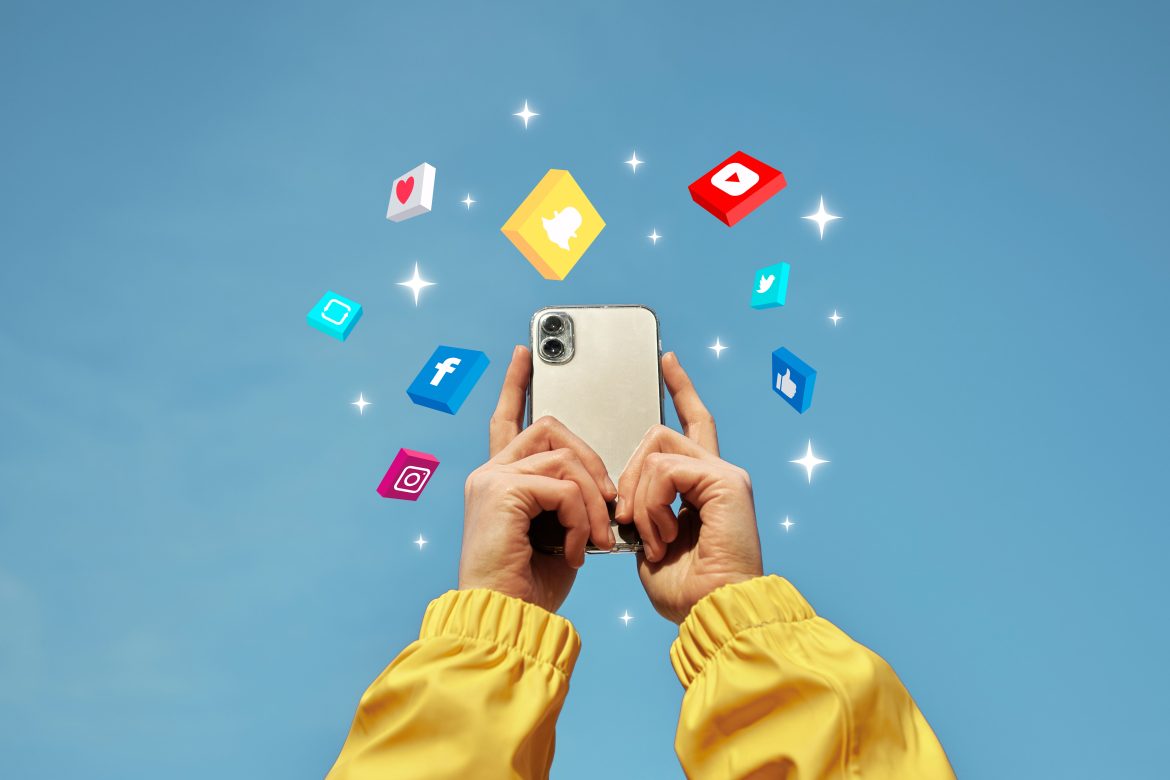
It’s easy to perceive models as individuals whose lives are brimming with sparkle and luxury, who “won’t get out of bed for less than $10,000 a day.” However, as highlighted by 27-year-old New York-based Danielle Mareka and 62-year-old Dee O residing in London, the truth for many models is a relentless effort to gain visibility.
Moreover, they must adapt to the evolving dynamics of the fashion industry: since O commenced her modeling career in 1983, the internet and social media have revolutionized the industry’s functioning. Models are now dealing with advancements like AI models showcasing in Vogue and the effects of GLP-1 weight-loss medications on the field. O and Mareka met to talk about their professional journeys, both past and present.
What led you to modeling?
Dee O: I grew up in Birmingham, coming from a working-class Irish immigrant family. My boyfriend, unbeknownst to me, entered me in a Face of 1983 competition. I believe I was around 17 or 18 then. Out of the blue, I received a call from Look Now magazine, inviting me as a Birmingham finalist. I secured the Birmingham title, which meant I, along with girls from various parts of the country, traveled to London for a weekend, where we were accommodated in a hotel. Although I didn’t win Face of 1983, the organizing agency still sought to represent me. Consequently, I began commuting from Birmingham, taking coaches from Victoria at 2am after eating some dreadful sandwich.

Danielle Mareka: I was born in New York to Guyanese-American parents, and my childhood was filled with watching America’s Next Top Model. That significantly fueled my desire to pursue modeling, but my family insisted I wait until I started college. I toyed with it a bit during my teenage years, but any disruption to my schooling was a hard limit. While attending NYU for a public health degree, I was a track runner, and one of my teammates had an interest in photography. That kickstarted my journey – we would take photos in one of the dorm rooms, and when fashion week came around, I’d scour Instagram for casting directors or designers. Eventually, I signed with this boutique agency WeSpeak, founded by a model, which focuses on empowering models to advocate for themselves.
How have your careers progressed since then?
DO: At around 29, I moved away from modeling and decided I needed to pursue a traditional job. I attended university and subsequently worked in education. Then, my daughter, who is now 27, began modeling, and she motivated me to return to it. I was initially hesitant. Fast forward five years, and here I am – I’ve signed with the Grey agency, which features a wide array of models, and opportunities are still coming my way. I’ve grown to genuinely enjoy it now, as the stress I experienced in my younger years has dissipated.
DM: After five years, I took a hiatus from WeSpeak because I was uncertain if I had reached my peak. I attempted to work with a new agency for a year and a half, which felt more conventional and corporate. We didn’t really align, and we both agreed it was best to part ways. I found my way back to WeSpeak, and while in London showcasing with one of my New York clients, I’ve been exploring for a UK agent. Many individuals provide no feedback – they simply convey that I’m not a fit for them.

DO: It’s often so unclear! It’s challenging because you just want to grab them and ask for honesty. Just say, you’ve recently signed 20 other girls, and five of them resemble me.
Dee, how has the modeling scene evolved since your early days?
DO: In the past, you didn’t engage with anyone; it was the agent interacting on your behalf – that’s why I’m giving them 20% – you were expected to stay quiet and show up on the day with a fresh face. Nowadays, many models are multi-talented; they are writers, stylists, no one is solely one thing. Leveraging social media to find your opportunities is the current norm.
DM: Indeed, I maintain a substantial social media presence, and during Covid, I experienced some viral success. Much of my career involved being active online and reaching out to the right contacts.
Does being a model affect your self-perception?
DM: Certain shoots made me question: do these individuals appreciate how I look? Do I appreciate my own appearance? For a period, I genuinely didn’t see myself as beautiful – it can really wear you down.
DO: Very subtly, if we continuously set aside our own needs, desires, and identities, it inevitably impacts our mental well-being over time. When I began in the early 1980s, the scene was still reminiscent of debutantes, very focused on class – I felt like an outsider. There’s a deeply personal aspect as well, comparing ourselves with other women.

I guess, by nature, models are intended to be seen and not heard, but does the constant need to cater to others’ expectations lead to exploitation of models?
DO: I witnessed some predatory behaviors, even before the MeToo movement in the 80s. Fortunately, I was quite outspoken, so I believe they kept their distance. But I felt the pressure. I also sensed that if I had socialized with certain individuals or attended specific gatherings, additional job offers might have come my way. The power dynamics favored many men, and there was undoubtedly a feeling of disposability.
DM: I’ve always embraced progressive values. At NYU, I was involved with Planned Parenthood and spoke on issues related to reproductive justice and women’s rights. However, during my time with my previous [more corporate] agency, I found myself becoming more reserved about my beliefs due to fear of being let go. Since then, I’ve collaborated with the Model Alliance, the closest entity we have to a union. They’ve been advocates for the Fashion Workers Act, which was enacted in New York last year, providing models with greater protection. Yet, even after this, I’ve met models who have been instructed by their agency to sign supplementary agreements above the law. There are still individuals who prey on the youth and their naivety.
DO: Without a doubt, the innocence, aspirations, and desperation.
DM: Upon joining the worker council at Model Alliance, they require you to sign a document acknowledging the potential risk of being dropped by your agent due to your affiliation with the organization. I was unaware of the severity or taboo around it.
The Fashion Workers Act is an incredible milestone. Are there advancements occurring in other areas?
DO: There remains a prevalence of very stereotypical, six-foot-something, size eight or six models on catwalks – occasionally, you might see a show that features someone different. One designer I admire, Ashish Gupta, intentionally employs a diverse array of models. His recent show at London fashion week had all dancers performing around the runway, which was exhilarating. Furthermore, it’s refreshing to observe a growing focus on the sourcing of clothing, its environmental impact, and the compensation of workers involved. I love fashion, but I proudly identify as a vintage secondhand enthusiast.

DM: Regarding Black representation in modeling, 2020 felt like a revival. Following the Black Lives Matter movements, my earnings surged, and numerous campaigns showcased diversity. However, recently, it seems like the momentum has reversed. Many Black models have lost their placements. An additional concern during shoots is that stylists frequently lack the expertise to manage Black hair – I’ve personally dealt with heat damage.
We often hear about the pressure models face regarding thinness. Have you encountered that?
DO: I had a roommate in my early modeling days who naturally wore a [UK] 12 [US 8]. Her diet consisted solely of apples, causing her dental issues, and she developed bulimia to meet her agency’s size expectations. Eventually, she became severely ill and had to return home, marking the end of her journey. That memory has stuck with me, and she wasn’t the only one.
DM: My figure has remained consistent for years, and perhaps because of this, I haven’t noticed or felt as much pressure to conform to thin ideals since I fit the mold. When I initially pursued modeling, I was more muscular from running track, and I vividly recall a meeting where I was told: “You need to alter your dimensions,” which mentally devastated me.
DO: It significantly affects your mental state. Yet, the landscape is diversifying in terms of sizes and shapes. However, even when curvier models are present, they often still face branding constraints – they must fit a certain hourglass silhouette.
With various options available to alter appearances, including Botox and weight-loss injections, have you noticed these changes influencing the industry?
DM: My modeling friends with curves have indicated a noticeable shift due to weight-loss injections, resulting in fewer runway opportunities for them.
DO: On one occasion, they applied strips of tape to my face to tighten my skin. I thought, if you’re not interested in my natural appearance, why not just hire someone younger? I believe they are just as perplexed as we are. I haven’t resorted to Botox or surgery, and I’ve resisted that pressure. Other models in my age group at shoots have mentioned: “Oh yes, I’ve just had a little work done.” That feels like a huge contradiction for me. Yet, I sometimes find myself reflecting when I look in the mirror and think: “Maybe if I just …”
Are you concerned about your images being misused for deepfakes or used to train AI?
DM: The Model Alliance has included a clause in the legislation requiring written consent from the model. I worry about the potential misuse of my images, but grappling with that is challenging, especially since posting on Instagram exposes my vulnerabilities.
Would you suggest modeling as a career path?
DM: Absolutely, it’s incredibly fulfilling, and working feels like playing dress-up – it reignites that inner child. However, if I had a daughter or son interested in modeling, I would prefer them to wait until they are older; starting at 15 or 16 would be too early.
DO: With my daughter, I did what many parents do: “Finish your studies first!” Initially, I was somewhat apprehensive, knowing the industry she was stepping into, but her determination was unwavering. I’m glad she pursued it. What’s wonderful is that we now get to work together on projects.

DM: I would advise cultivating an identity outside of modeling, as for an extended period, people recognized me on the street because of my TikTok, and I inadvertently allowed it to define me for a time. I struggled with feelings of confusion.
DO: My travels across the globe have made it worthwhile. However, it certainly shouldn’t be the sole aspect of your identity, as it can vanish in an instant.

